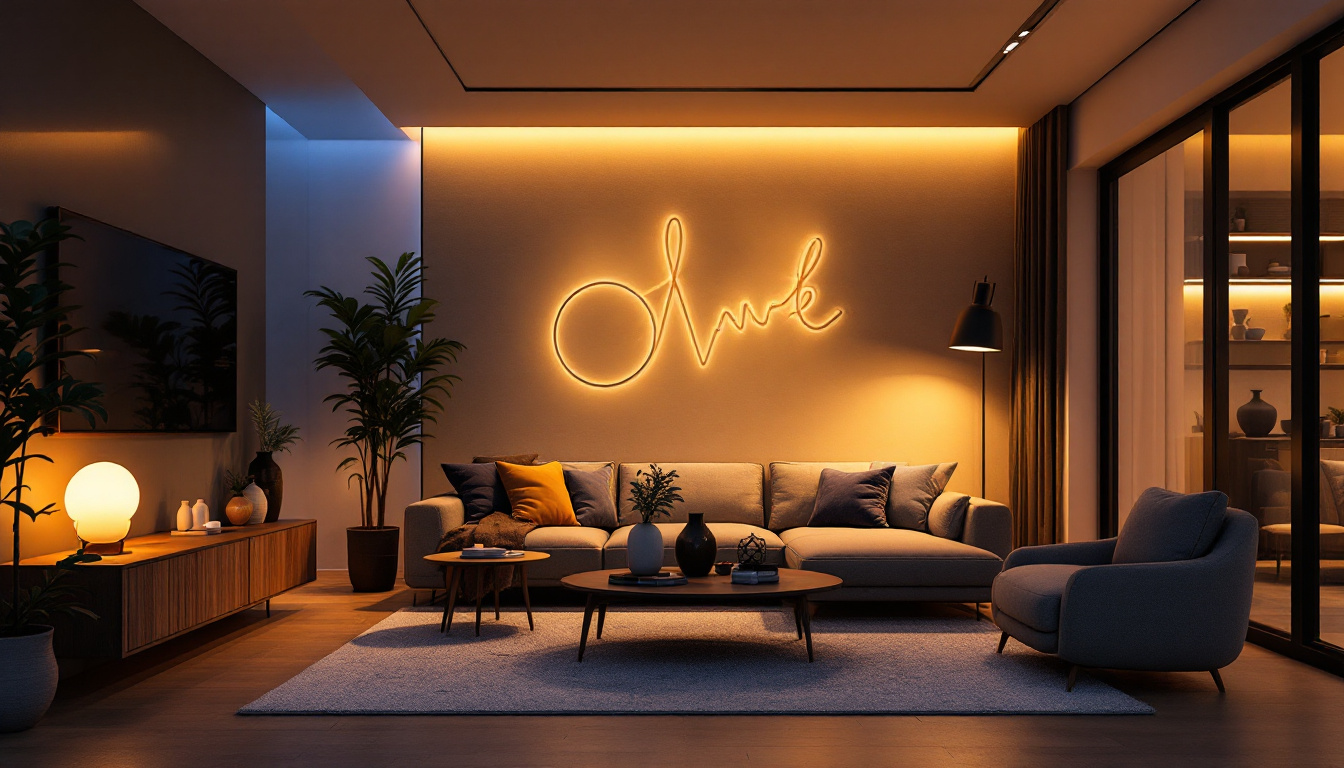
Lighting contractors play a crucial role in the design and installation of indoor lighting systems. While expertise and experience are essential in this field, even seasoned professionals can make mistakes that compromise the effectiveness and aesthetics of their projects. Understanding these common pitfalls can help contractors enhance their work and deliver better results for their clients.
One of the most significant mistakes lighting contractors make is underestimating the importance of thorough planning. A well-thought-out lighting plan is essential for achieving the desired ambiance and functionality in any indoor space.
Every client has unique preferences and requirements. Failing to engage in detailed discussions about their needs can lead to a lighting design that does not meet expectations. It’s crucial to ask questions about how the space will be used, the desired mood, and any specific lighting features they envision.
Taking the time to understand the client’s vision not only helps in creating a tailored lighting solution but also builds trust and rapport. This engagement can lead to more satisfied clients and potential referrals in the future. Moreover, understanding the client’s lifestyle and how they interact with their space can provide insights into practical lighting solutions that enhance usability. For instance, a family that enjoys hosting gatherings may prioritize bright, adjustable lighting in communal areas, while a couple seeking a cozy atmosphere might prefer softer, dimmable options in their living room.
Another common oversight is neglecting a comprehensive site assessment before starting the project. Each space has unique characteristics, such as ceiling height, natural light sources, and architectural features that can significantly influence lighting choices.
Conducting a thorough site assessment allows contractors to identify potential challenges and opportunities, ensuring that the final lighting design is both functional and aesthetically pleasing. This step should never be rushed or overlooked. Additionally, assessing the existing electrical infrastructure is crucial; it helps in determining whether upgrades are necessary to support new lighting installations. Understanding the layout of the space can also inform decisions about the placement of fixtures to avoid shadows and ensure even light distribution. By meticulously evaluating these factors, contractors can create a seamless integration of lighting that enhances the overall design and functionality of the space.
Getting the right light levels is crucial for any indoor environment. Miscalculating the required lumens can lead to spaces that are either too dim or excessively bright, both of which can be detrimental to the overall experience. Insufficient lighting can strain the eyes and create an unwelcoming atmosphere, while overly bright environments can lead to discomfort and distraction, making it difficult to focus or relax.
Layered lighting involves combining different types of lighting—ambient, task, and accent—to create a balanced and flexible lighting scheme. Many contractors focus solely on ambient lighting, neglecting the importance of task and accent lighting. This oversight can diminish the usability of a space, especially in areas where specific activities take place, such as reading, cooking, or working on projects.
By incorporating layered lighting, contractors can enhance the functionality of a space while also providing visual interest. For instance, in a kitchen, task lighting is essential for work areas, while accent lighting can highlight architectural features or artwork. Additionally, using dimmers can allow for further customization of light levels, enabling users to adjust the ambiance according to the time of day or the nature of the activity, whether it be a lively dinner party or a quiet evening at home.
Color temperature plays a vital role in how a space feels. Using lights with varying color temperatures can create a disjointed atmosphere. For example, mixing warm and cool lights within the same room can lead to an uninviting ambiance. Understanding the psychology of color temperature can help contractors make more informed decisions about lighting choices, as different temperatures can evoke different emotions and reactions from occupants.
Contractors should carefully select light sources that complement the intended mood of the space. Warm white lights are often best for living areas, while cooler temperatures may be more appropriate for workspaces. Moreover, it’s essential to consider how natural light interacts with artificial lighting throughout the day. As sunlight changes, the color temperature of the room can shift, and using smart lighting solutions that adapt to these changes can create a more harmonious environment, enhancing both comfort and productivity.
The choice of fixtures can make or break a lighting design. Selecting the wrong fixtures can lead to aesthetic mismatches and functional inadequacies.
One common mistake is failing to consider the scale and proportion of fixtures in relation to the space. A large chandelier in a small room can overwhelm the space, while tiny fixtures in a grand hall can look lost.
Contractors should take measurements and visualize how fixtures will fit within the overall design. This attention to detail ensures that the lighting complements the space rather than detracting from it.
In today’s environmentally conscious world, energy efficiency is more important than ever. Choosing fixtures that are not energy-efficient can lead to higher operational costs for clients and a negative environmental impact.
Contractors should prioritize LED fixtures and other energy-efficient options that provide the necessary illumination without excessive energy consumption. This not only benefits the client’s budget but also aligns with sustainable practices.
lighting control systems are essential for enhancing the functionality and versatility of indoor lighting. Neglecting to incorporate these systems can result in missed opportunities for creating dynamic lighting environments.
Dimming capabilities allow users to adjust the brightness of their lighting according to their needs and preferences. Many contractors overlook the importance of including dimmers in their designs, which can lead to a less flexible lighting solution.
By offering dimming options, contractors can empower clients to create the desired atmosphere for different occasions, from bright task lighting to soft, ambient lighting for relaxation.
smart lighting technology is rapidly gaining popularity, providing users with greater control over their lighting environments. Contractors who fail to incorporate smart lighting solutions may find themselves at a disadvantage.
Integrating smart lighting systems allows clients to control their lights remotely, set schedules, and even adjust color temperatures through mobile apps. This modern approach can significantly enhance the user experience and provide added value to the contractor’s services.
Maintenance is an often-overlooked aspect of lighting design. Failing to consider how easy it will be to maintain and access fixtures can lead to long-term issues for clients.
Contractors sometimes place fixtures in locations that are difficult to reach for maintenance. This oversight can lead to frustration for clients when it comes time to replace bulbs or clean fixtures.
Designing with accessibility in mind ensures that maintenance tasks can be performed with minimal hassle. This consideration not only enhances the longevity of the lighting system but also improves client satisfaction.
Different lighting components have varying lifespans. Contractors should be aware of the expected longevity of the fixtures and bulbs they choose. Overlooking this aspect can lead to premature failures and frequent replacements, which can be costly for clients.
By selecting high-quality components with longer lifespans, contractors can provide a more reliable and cost-effective lighting solution. This attention to detail reflects professionalism and care for the client’s investment.
The lighting industry is constantly evolving, with new technologies and design trends emerging regularly. Contractors who fail to stay updated may find themselves offering outdated solutions that do not meet current client expectations.
Advancements in lighting technology, such as tunable white lighting and advanced control systems, can significantly enhance the functionality of indoor spaces. Contractors who overlook these innovations may miss opportunities to provide cutting-edge solutions.
Staying informed about new technologies allows contractors to offer clients the most efficient and effective lighting solutions available. This not only improves the quality of the work but also positions the contractor as a knowledgeable expert in the field.
Design trends in lighting can change rapidly, influenced by shifts in interior design styles and consumer preferences. Contractors who do not keep abreast of these trends may struggle to meet the aesthetic demands of their clients.
By regularly researching and understanding current design trends, contractors can provide lighting solutions that are not only functional but also visually appealing. This adaptability can set a contractor apart in a competitive market.
Effective communication is vital in any contractor-client relationship. Poor communication can lead to misunderstandings, unmet expectations, and ultimately, dissatisfaction.
Contractors should ensure that clients have a clear understanding of the project scope, timelines, and costs. Failing to communicate these details can lead to confusion and frustration.
Establishing clear expectations from the outset helps to build trust and ensures that both parties are on the same page throughout the project. Regular updates and check-ins can further enhance communication and transparency.
After the installation is complete, many contractors neglect to provide ongoing support to clients. This oversight can leave clients feeling abandoned and unsure about how to operate or maintain their new lighting systems.
Offering post-installation support, such as guidance on using control systems or troubleshooting issues, can significantly enhance the client experience. This commitment to customer service can lead to repeat business and referrals.
Lighting contractors play a vital role in shaping the indoor environments where people live and work. By being aware of common mistakes and taking proactive steps to avoid them, contractors can enhance their work quality and client satisfaction. From thorough planning and accurate calculations to effective communication and staying updated with industry trends, each aspect contributes to the success of a lighting project.
Ultimately, a commitment to excellence in lighting design and installation not only benefits contractors but also enriches the experiences of their clients, creating spaces that are both functional and beautiful.
Don’t let common lighting mistakes dim the success of your projects. At LumenWholesale, we provide lighting contractors with the resources to shine. Our spec-grade lighting products ensure that you can create stunning, functional indoor environments without the worry of inflated costs. With our unbeatable wholesale prices and free shipping on bulk orders, you can trust that you’re getting the best value for your investment. Elevate your lighting designs today by visiting Wholesale Lighting at the Best Value and discover how we can help you achieve lighting excellence in every space.

Discover the key factors that distinguish leading lighting contractors in the industry, focusing on the crucial role of foot candles in creating optimal lighting solutions.

Explore the transformative impact of LED technology in contemporary lighting solutions.

Discover how temporary lighting solutions can transform your projects, offering flexibility and efficiency.

Discover how basement lighting can transform your home and complete your lighting projects.